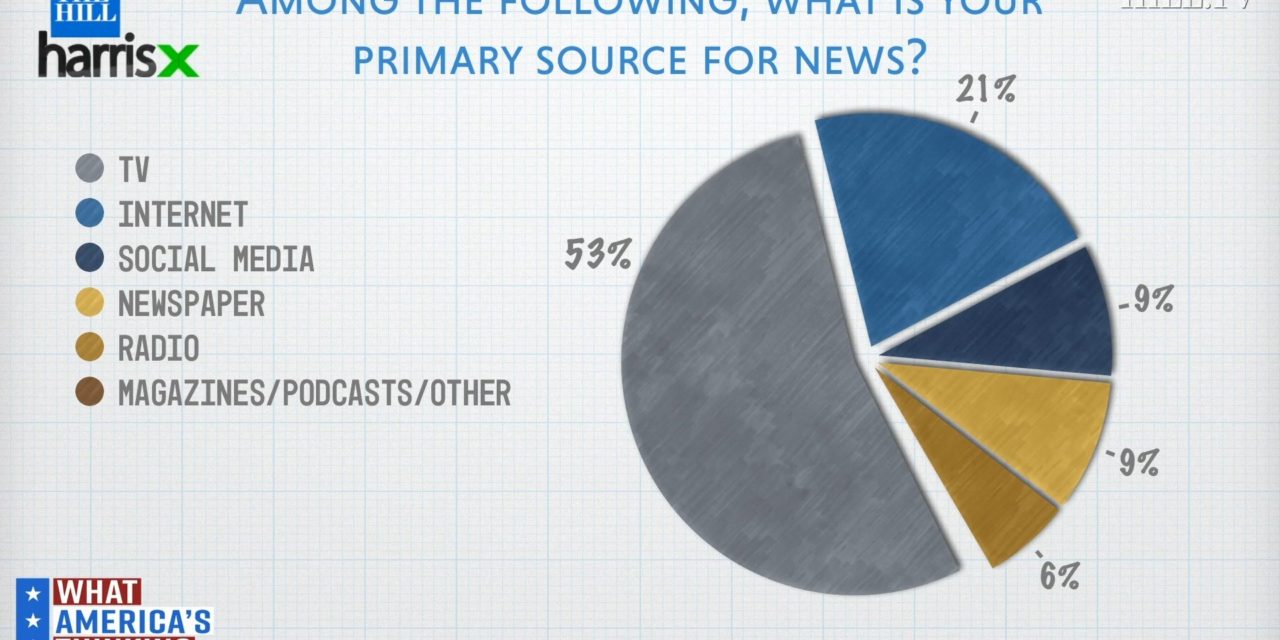Source: thehill.com, December 2019
— Media Group Online (@THE_MEDIACENTER) December 18, 2019
A new Hill-HarrisX poll found that TV is still the most widely used news platform among Americans, despite the rise of the internet and social media.
The survey released on Thursday showed that 53 percent of registered voters across the United States named TV as their primary source for news.
Less than a quarter — 21 percent — said they prefer to get their news from the internet.
An equal amount — 9 percent — said they’d rather turn to social media or newspapers for the latest news updates.
Six percent said they rather listen to the radio, while 1 percent said they prefer to get their news from magazines.
Older generations were understandably more inclined to name TV as their preferred mode for news.
Sixty-nine percent of those between the ages of 50 and 64 said they preferred to get their news by watching TV, compared to 34 percent of those between the ages of 18 and 34 who said the same.

The survey comes as the news media is under renewed scrutiny, particularly in the 2020 Democratic presidential primary race.
Following Sen. Kamala Harris’s exit from the primary race, several Democrats criticized the media coverage of her campaign.
Former Housing and Urban Development Secretary Julián Castro, a Democratic presidential contender, accused the media of treating Harris unfairly and holding Harris to a “different standard.”
Her exit also prompted outcries of racism and sexism.
Nina Turner, co-chairwoman Sanders’s presidential campaign, reacted sympathetically Harris’s decision to drop out of the race.
“There is no doubt that systemic racism is real and that it even bumps up against people as successful as Senator Harris,” Turner, told Hill.TV on Thursday. “She is a black woman in America — that is baked in.”
Though once considered a top contender for the Democratic nomination, Harris had dropped to 2 percent support in Hill-HarrisX poll after surging to third place with 11 percent support following the first Democratic debate.
The Hill-HarrisX survey of 1,001 adults, conducted Nov.30-Dec. 1, has a margin of error of plus or minus 3.1 percentage points.
— Tess Bonn

